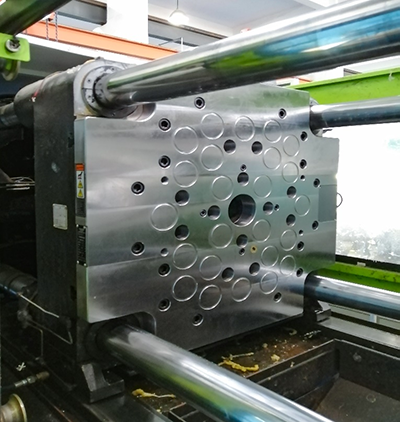

On 28th August, 2020. HVR MAG R&D department hold a meeting to discuss how to calculate the clamping force of a magnetic platen. Our magnetic clamping system consist of two magnetic platens. One is movable platen and the other fixed platen. Rare Earth Neodymium Magnets is the most important material for the magnetic platen system. We were often asked by our customer how to calculate the clamping force of the magnet. Calculators are used to test the Clamping Force between a magnet and the injection mold. Clamping force are measured in pounds (or kilograms). And it can vary significantly as a result of different surface conditions, direction of clamping, type of steel, etc. The magnetic platen clamping force calculation is presented to aid in design but the user should not use them as a definitive reference.
The surface field is measured in Gauss (or Tesla).
The size and shape of a magnet affect its magnetic field output and also its maximum possible clamping force. HVR MAG use the single magnetic pole. Which will promise the max magnetic force.
Temperature, environmental conditions, the material being attracted (size, quality, shape, permeability, etc) all impact on the magnet performance, as does the distance between the magnet and the material being attracted.
Every magnet will have a pull rating value (often stated in kilograms but really it should be in Newtons. Because it is a force – 1kg=9.82N). The clamping force test assumes that the magnet is operating at the highest Br for its grade and it is attracting onto injection molding.The values are therefore comparative and indicators of potential performance capability. You may never get to achieve the clamping force in your real world application.
Theoretically, if you have a magnet clamped onto injection mold and you pull it away with just above the rated clamping force, the magnet will probably just be removed. The clamping force test value is therefore a force guaranteed to pull the magnet directly away from the ferromagnetic material (the pull being perpendicular to the ferromagnetic face that the magnet is clamped onto).
The clamping force can be converted to a clamping pressure if you calculate the magnet pole face cross sectional area (really the overlap cross sectional area). Divide the force in Newtons by the area in mm2 and the pressure is calculated (in Pascals or N/ mm2).
The clamping force is given as a pull of the magnet perpendicular to the ferromagnetic surface. But the magnets can slide along the surface with a shear force. The shear force is affected by levels of friction. As a quick rough rule of thumb, a magnet is likely to start to slide over a ferromagnetic surface if the shear force applied is about 1/5th of the pull force (20%).
If you want to know more about the magnetic clamping system welcome you visit our company website: www.magneticplaten.com

